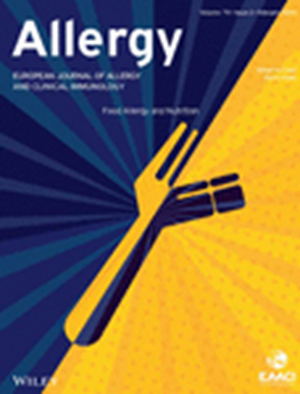Two-Year Data of Tapered Dupilumab Shows High Effectiveness in Chronic Rhinosinusitis with Nasal Polyps With Nonsteroidal Anti-inflammatory Drug-Exacerbated Respiratory Disease
Abstract
Background
Patients with Non-steroidal anti-inflammatory drugs (NSAID)-Exacerbated Respiratory Disease (N-ERD) can suffer from difficult-to-treat primary diffuse type 2 chronic rhinosinusitis with nasal polyps (CRSwNP). This study evaluates dupilumab effectiveness and dose tapering in CRSwNP patients with N-ERD compared to those without.
Methods
A real-world prospective cohort with CRSwNP patients, with N-ERD or without (CRSwNP-NOS; not otherwise specified), aged ≥ 18 treated with dupilumab 300 mg subcutaneously every 2 weeks. In case of clinical control, the interdose interval was prolonged every 6 months with steps of 2 weeks. (Clinical) data were collected at baseline, 24 weeks, and 2 years of treatment.
Results
Most baseline characteristics, including Nasal Polyp Score (NPS), Sino-Nasal Outcome Test-22 (SNOT-22), and Sniffin′ sticks-12 test (SSIT-12) were comparable between groups (N-ERD n = 105, CRSwNP-NOS n = 293). There was a higher prevalence (91.5% vs. 71.1%, p < 0.001) but comparable control of asthma in N-ERD patients (asthma control test [ACT]: N-ERD 66.7% less controlled/uncontrolled vs. CRSwNP-NOS 58.3%, p = 0.21). All outcomes improved significantly with dupilumab treatment at 24 weeks and remained improved after 2 years, without intergroup differences (median scores at 24 weeks for N-ERD patients vs. CRSwNP-NOS, respectively: NPS: 2 vs. 1, p = 0.65; SNOT-22: 18 vs. 19, p = 0.27; SSIT-12: 7 vs. 8, p = 0.02; ACT: 21 vs. 22, p = 0.11). Dose tapering was possible in the majority of patients, with almost half at an 8–12 weeks interval in both groups after 2 years.
Conclusion
Dupilumab shows comparable effectiveness and taper feasibility between CRSwNP N-ERD patients and CRSwNP-NOS patients.


 求助内容:
求助内容: 应助结果提醒方式:
应助结果提醒方式:


